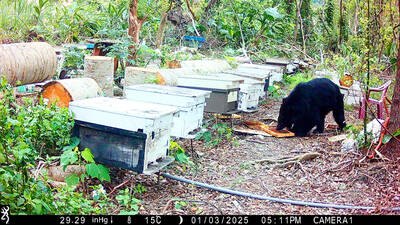In light of numerous typhoon disasters in recent years, the Ministry of the Interior has drafted a coastline law in an effort to better care for land restoration and conservation.
The draft proposes having the nation’s coastline divided into “preserved areas” and “protected areas,” and that a special unit should be set up to screen coastal developments from a preservationist point of view.
According to an official with the ministry’s Construction and Planning Agency, the spirit of the draft law is to set up a special governmental unit that could preview every coastal -development project with the goal of -preserving coastal geology.
The drafted coastline law would require central authorities to compile basic databases for coastal areas to facilitate research and coastal management, the official said.
Under the proposed law, the nation’s coastal areas would be divided into first and secondary level protected areas.
The first level would prohibit change to the shoreline or restrict uses to those that would keep it in its natural state, said the official, unless approval for other uses is granted by the central authorities.
Secondary level status would designate areas as “buffer zones,” where violations that cause a -natural disaster to occur because of alterations to the natural environment would be punishable with fines of up to NT$600,000 and up to 10 years in prison.
Meanwhile, the draft proposes that areas suffering from erosion, saltwater encroachment and land subsidence be categorized as national geological revitalization areas, requiring them to have a protection plan. The entire coastal management plan, preservation plan and protection plan would be reviewed every five years, the official said.
As it is currently written, the draft act would empower local governments to remove any buildings or land modifications that are obstacles to the implementation of the law. It also proposes granting the Council of Agriculture the power to abolish fishing rights, as well as empowering the Ministry of Economic Affairs to halt all mining and quarrying activities in coastal areas.
However, Lin Tsung-yi (林宗儀), an assistant professor at National Taiwan Normal University, has doubts about the effectiveness of the act, should it be passed.
While the shoreline is public property, there is also private property where hotels are built, such as in Kenting (墾丁), he said.
“It’s like they own the whole beach,” he said. “In such cases, how would the government intercede and manage the coast?”
Some officials also doubt that the proposed bill would make it through the legislature, noting that since its initial draft in the 1990s, it has not won the support of the lawmakers.
Conflict of interest and the noncommittal attitudes of the legislators means the draft only has a slim chance of being put up for review, an official said.

SHIPS, TRAINS AND AUTOMOBILES: The ministry has announced changes to varied transportation industries taking effect soon, with a number of effects for passengers Beginning next month, the post office is canceling signature upon delivery and written inquiry services for international registered small packets in accordance with the new policy of the Universal Postal Union, the Ministry of Transportation and Communications said yesterday. The new policy does not apply to packets that are to be delivered to China, the ministry said. Senders of international registered small packets would receive a NT$10 rebate on postage if the packets are sent from Jan. 1 to March 31, it added. The ministry said that three other policies are also scheduled to take effect next month. International cruise ship operators

NUMBERS IMBALANCE: More than 4 million Taiwanese have visited China this year, while only about half a million Chinese have visited here Beijing has yet to respond to Taiwan’s requests for negotiation over matters related to the recovery of cross-strait tourism, the Tourism Administration said yesterday. Taiwan’s tourism authority issued the statement after Chinese-language daily the China Times reported yesterday that the government’s policy of banning group tours to China does not stop Taiwanese from visiting the country. As of October, more than 4.2 million had traveled to China this year, exceeding last year. Beijing estimated the number of Taiwanese tourists in China could reach 4.5 million this year. By contrast, only 500,000 Chinese tourists are expected in Taiwan, the report said. The report

The Forestry and Nature Conservation Agency yesterday launched a gift box to market honey “certified by a Formosan black bear” in appreciation of a beekeeper’s amicable interaction with a honey-thieving bear. Beekeeper Chih Ming-chen (池明鎮) in January inspected his bee farm in Hualien County’s Jhuosi Township (卓溪) and found that more than 20 beehives had been destroyed and many hives were eaten, with bear droppings and paw prints near the destroyed hives, the agency said. Chih returned to the farm to move the remaining beehives away that evening when he encountered a Formosan black bear only 20m away, the agency said. The bear

Chinese embassy staffers attempted to interrupt an award ceremony of an international tea competition in France when the organizer introduced Taiwan and displayed the Republic of China flag, a Taiwanese tea farmer said in an interview published today. Hsieh Chung-lin (謝忠霖), chief executive of Juxin Tea Factory from Taichung's Lishan (梨山) area, on Dec. 2 attended the Teas of the World International Contest held at the Peruvian embassy in Paris. Hsieh was awarded a special prize for his Huagang Snow Source Tea by the nonprofit Agency for the Valorization of Agricultural Products (AVPA). During the ceremony, two Chinese embassy staffers in attendance